Computer Science, Cyber-Archaeology and Cultural Heritage
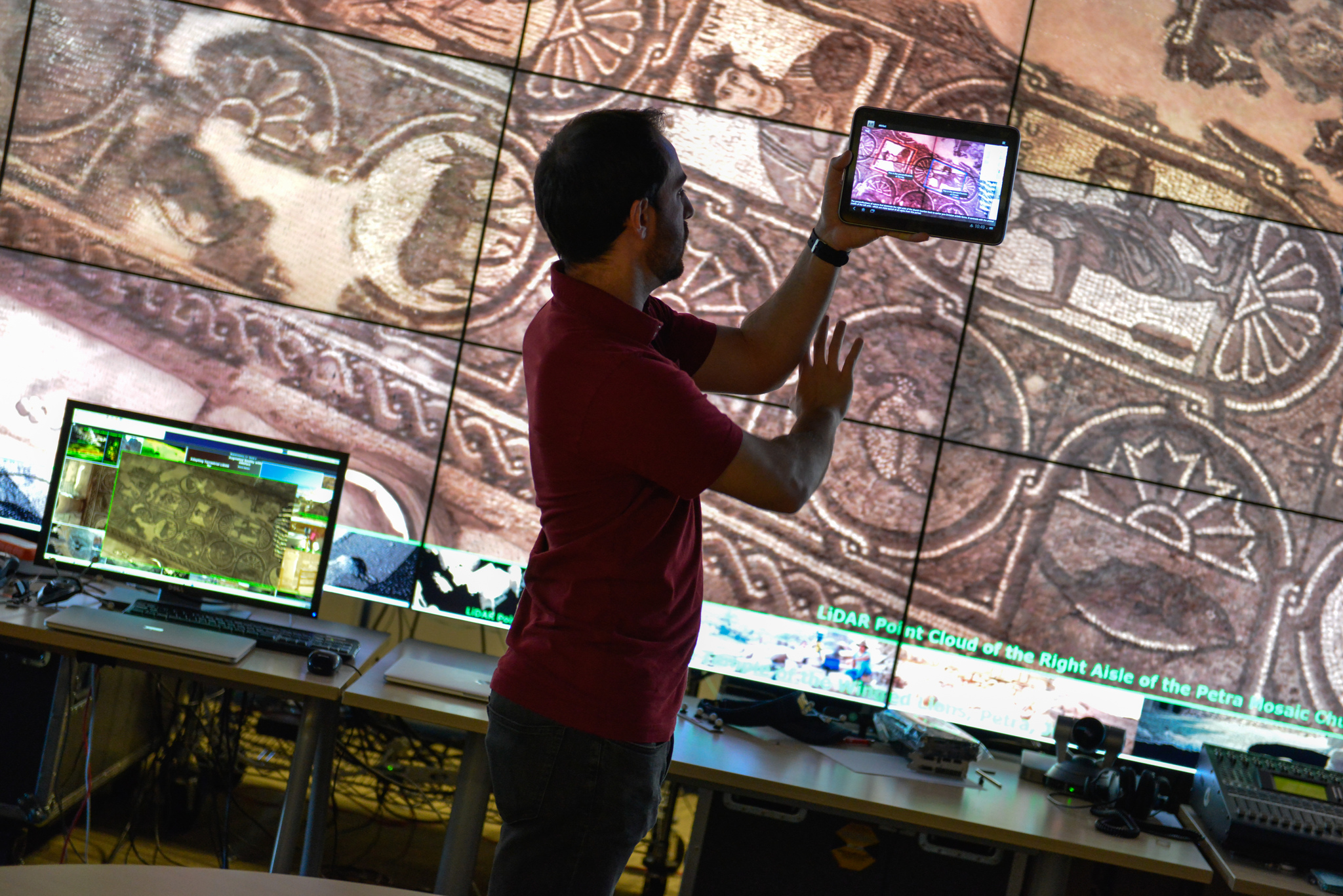
San Diego, Oct. 31, 2014 — It has been a busy month for Ph.D. students from computer science, structural engineering and materials science who are part of the NSF IGERT project in cultural heritage engineering based in the Qualcomm Institute's Center of Interdisciplinary Science for Art, Architecture and Archaeology (CISA3).
In late September, CSE Ph.D. student David Vanoni was in the 2,000-year-old city of Lecce on the southeastern heel of the boot-shaped Italian peninsula. He presented his research at the first International Conference on Augmented and Virtual Reality (Salento AVR 2014). Vanoni, whose doctoral research has focused primarily on augmented reality, recounted his experience with the "Intuitive Visualization of Reflectance Transformation Imaging for Interactive Analysis of Cultural Artifacts." As with most CISA3-related research, Vanoni collaborated with colleagues from other departments for the underlying research presented in Lecce, i.e., with structural engineering Ph.D. student Li Ge, and with their other co-author, structural engineering professor Falko Kuester, who is a faculty-affiliate in CSE and director of CISA3.
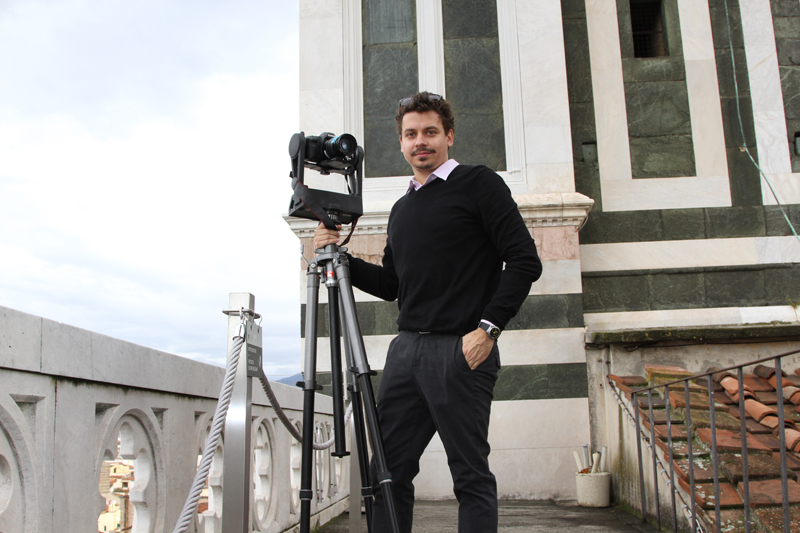
Vanoni and fellow CSE Ph.D. candidate Vid Petrovic later accompanied Kuester to the second annual CyArk 500 Summit, at the National Archives in Washington, D.C. October 7-8. The event focused on democratizing cultural heritage by enabling access to information, technology and support. Government ministers, corporate executives, diplomats, scholars, and heritage professionals attended the event to learn about new technologies that are benefiting and augmenting heritage preservation. Specifically, the summit aimed to update progress in meeting the CyArk 500 Challenge, whose goal is to digitally preserve 500 heritage sites in five years – in order to “save these cultural heritage sites digitally before more are ravaged by war, terrorism, arson, urban sprawl, climate change, earthquakes, floods, and other threats.” Kuester gave an invited talk on digital archives for cultural heritage diagnostics and preservation, while Petrovic and Vanoni had the opportunity to deliver related research involving their respective computer-science contributions to cultural heritage. Petrovic focused on "Visual Analytics Techniques for Big Data," while Vanoni explored "Augmented-Reality Techniques for Multi-Spectral Data Analysis." CyArk was founded in 2003 to create a free, 3D online library of the world’s cultural heritage sites using laser scanning and other technologies of the sort used by CISA3 for projects in art, archaeology and historic structures. .
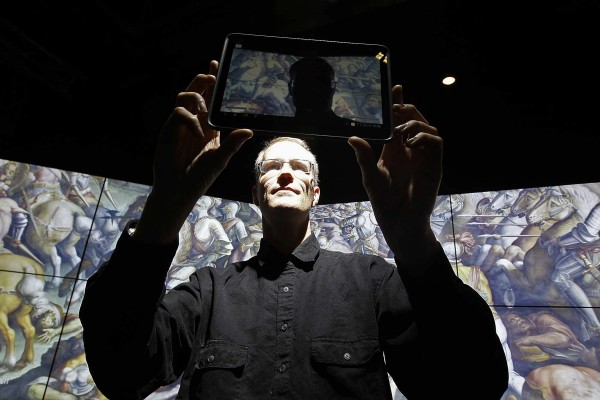
CSE faculty-affiliate Falko Kuester was invited to deliver a keynote at Arqueologica 2.0 in Ciudad Real, just south of Madrid, Spain. On Friday, Oct. 17, the archaeology conference gave Kuester an opportunity to talk about the growing theme underpinning many of CISA3's projects: "Creating the Cyber-Archaeology Data Scaffold: Multispectral Imaging for Cultural Heritage Diagnostics and Preservation." Kuester also co-authored a paper delivered at the IEEE Imaging Systems and Techniques (IST 2014) conference in Santorini, Greece on Thursday, Oct. 16 by structural engineering Ph.D. student Mike Hess (another CISA3 IGERT grad student). Their paper proposed an approach that takes advantage of known relative camera positions in order to automatically register thermal images to visible images for non-destructive evaluation of entire building facades. Hess recounted the custom design of a camera mount to anchor three webcams around a thermal camera. When a visible-light image mosaic is generated, the system automatically generates a registered thermal image mosaic. The benefit of this approach is that there is no reliance on features being present in the thermal image to match to the visible image – which is not always possible in structural diagnostics using different ranges of the electromagnetic spectrum.
Euromed 2014
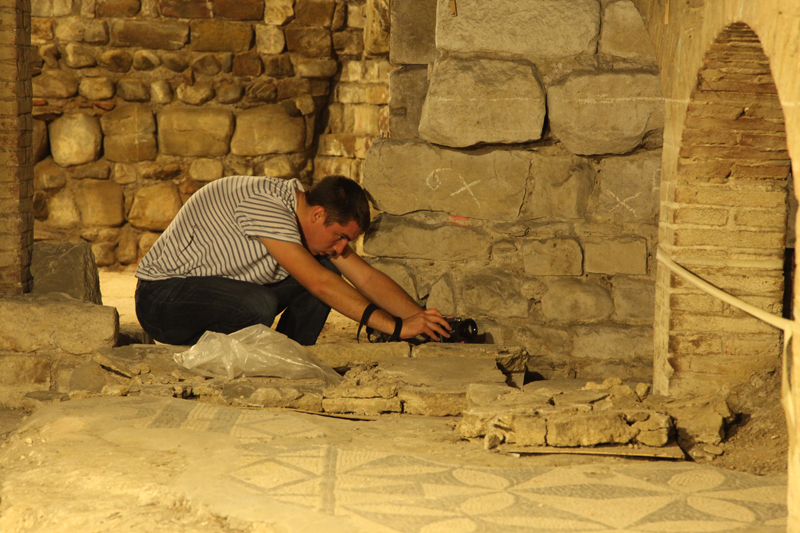
Hess will be back in Europe next week for the International Conference on Cultural Heritage (Euromed 2014) in Cyprus. The IGERT student will again be talking about non-destructive diagnostic techniques, but using a case history from a different part of the world, Central America, for his Nov. 7 presentation. Hess was part of a CISA3 expedition to Quintana Roo on the northeastern tip of the Yucatan Peninsula, to document a 16th century church at Ecab. Hess and his colleagues spent two days capturing the church from every angle using 3D laser scanning, stereo panoramas, high-resolution imagery, aerial photography and thermal imaging. The resulting documentation was primarily to plan future efforts at protecting and preserving the church. According to Hess, “The scope of this project was aimed towards the structural diagnosis and preservation of a historical monument, but the implications of combining all of these diagnostic methodologies reach much farther into the realm of historical, archaeological and anthropological analyses.”
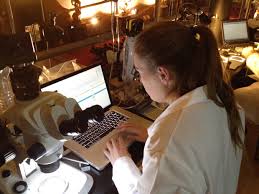
Also in Cyprus for Euromed 2014 will be fellow CISA3 IGERT researcher Samantha Stout, a Ph.D. student in materials science. She will report on her preliminary study of two mural painting in the Catacombs of San Giovanni in Syracuse using a portable device for x-ray fluorescence spectroscopy, in tandem with both multispectral imaging and 3D modeling. XRF analysis contributed “a better idea of the materials present, but definitive assignments for the pigments were not possible,” reports Stout in an abstract for her talk in Cyprus. “The murals show some signs of degradation products, including a calcium sulfate surface encrustation, and a bluish-black copper-based pigment, which we suspect is the degradation of azurite into tenorite.”
Related Links
IST 2014
CyArk 500
Euromed 2014
Arqueologia 2.0
Media Contacts
Doug Ramsey, (858) 822-5825, dramsey@ucsd.edu

